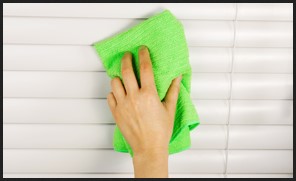
Introduction
When you’re cooking delicious food every day, the fridge needs to be restocked constantly and is bound to get messy. It is one of the most heavily used appliances in your home and if you don’t keep it clean, you’ll have a giant hygiene problem and also reduce the lifespan of your fridge. If your fridge breaks down, you can search for “cleaning services near me” and hire professionals to fix it for you. For now, let’s check out a few expert tips for cleaning your fridge.
Tips & Tricks
- Empty out the fridge and take inventory – To begin cleaning, you need to empty out the fridge. Pull out everything on the kitchen countertop, empty cabinets, and drawers, and start taking inventory. Check the expiry dates and put those products aside for throwing them out in the garbage or into the compost bin.
Wipe the underside of sticky jars and bottles before putting them on the counter. Put dairy and meat products in a cooler with a ton of ice. Moreover, it’s best to time the fridge cleaning right before shopping for groceries and fresh produce. That way, the fridge stays mostly empty, and cleaning it out doesn’t become a nightmare.
- Take out fittings and shelves – You may have cracked plastic shelves numerous times while trying to bring them out of the fridge during cleaning day. That happens since plastic becomes more brittle and crack-prone when it’s cold. This can easily be avoided by turning off the refrigerator and letting the plastic shelves reach room temperature to be more flexible. The same holds for glass shelves. After all the shelves and fittings reach room temperature, you can put them in hot soapy water for soaking.
- Clean the inside – Start cleaning the inside of the fridge with vinegar. Bring out the drawers and shelves and spray the interior surface with a solution of water and distilled vinegar. Spray more on areas that have dried gunk or food buildup. Allow the interior surface to soak in that vinegar solution while you clean the removed shelves and drawers.
After you’re done cleaning the shelves and drawers, you can wipe down the interior surface of the fridge with a damp and soft microfiber cleaning cloth. The vinegar solution shouldn’t just remove filth and kill off germs, but also remove any bad odor. Make sure to wipe from the top to bottom so that debris falls to the bottom, and you don’t need to do extra redundant cleaning later on.
While there are other products you can find at the department store for cleaning your fridge, they may leave chemical residue and odors that may be absorbed by the food. That’s why vinegar is a better cleaning agent. It’s all-natural and doesn’t harm the environment either. The same holds for baking powder. If vinegar doesn’t get the job done, you can make a paste of baking powder with some warm water and use it for cleaning the fridge.
- Clean the drain hole – When you clean your fridge, it’s best to include the drain hole in the deep clean routine. Remove the crisper drawers from the fridge and use a plumbing snake or some other type of drain hole cleaning device to get rid of any blockage. If the blockage was there for a long time, it’s highly likely that the back of your fridge hides a nasty surprise.
That means you may witness a lot of bacteria, mold, and mildew. To clean that out without gagging, wear a mask and use a basting syringe to pour in a bit of vinegar and water into the drain hole. Next, use a cotton swab to work the vinegar solution on the walls of the drain hole to remove residual deposits. Finally, use the vinegar solution to wipe the bottom of the fridge before putting back the crisper drawers.
- Clean out the drawers and shelves – Assuming that you’ve removed the fridge drawers entirely and soaked them in warm soapy water, it’s time to scrub them with an old toothbrush or a bottle brush. Next, rinse, pat, and dry them before putting them back in the refrigerator. Make sure that the drawers and the interior surface of your fridge are completely dry before putting them back.
After your fridge shelves have been drying for a long time, it’s time to scrub them carefully with a soft sponge. If the shelf grooves have visible gunk on the grooves, you can use an old toothbrush, or a cotton swab soaked in vinegar and water for cleaning those areas. Next, rinse and allow them to dry out before putting them back inside the fridge.
- Wipe down the seals – Fridge door seals look very insignificant. However, those strips of rubber are very important for maintaining the cooling efficiency of your fridge. If you notice dry crumbs and particles on the seal, you can vacuum them out. Next, wrap a blunt knife with a soft cloth, soak it in vinegar and run it gently along the crevices of the rubber seals. Repeat the process with a dry and soft cloth wrapped around a blunt knife in order to dry that part off.
- Clean the freezer – After your freezer compartment has thawed and the ice starts to melt away, use a defroster ice shovel to carefully remove the ice without damaging the lining. Next, fill up a spray bottle with equal parts of warm water and vinegar and start spraying all across the walls. Now, repeat the same things you did for cleaning the interior walls of the refrigerator’s main compartment. After the fridge is dry and clean, switch it on. Allow it to reach the desired cold temperature before restocking it with food. You can clean the external surface of the fridge during that time.
Conclusion
You spend a lot of time researching the best fridge you can buy within your budget. That’s why you need to make sure that your refrigerator is cleaned off properly to discourage infestation and bacteria growth. Otherwise, your fridge may break down easily and you may need to look up “cleaning services near me” to hire professionals for fixing it up.
